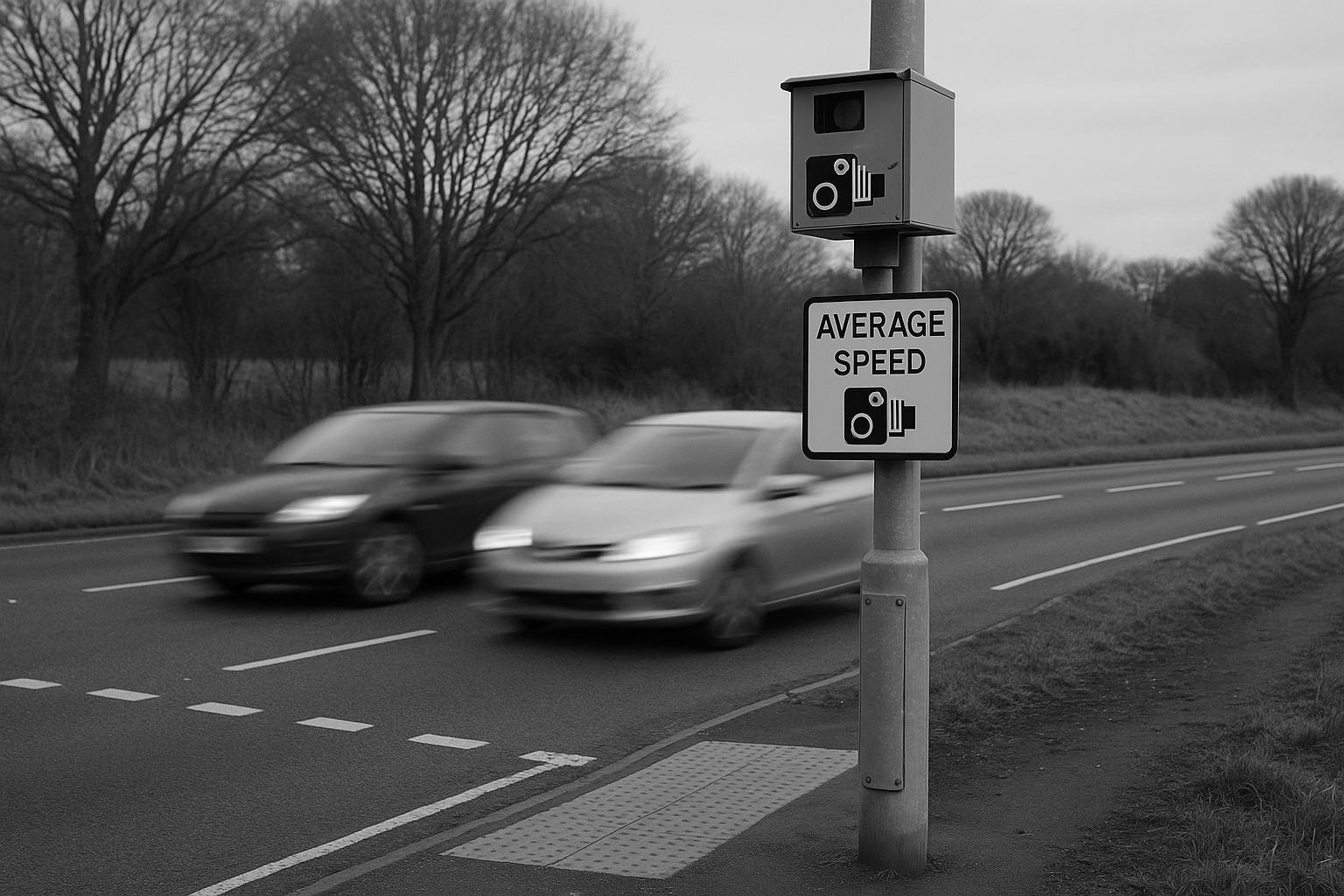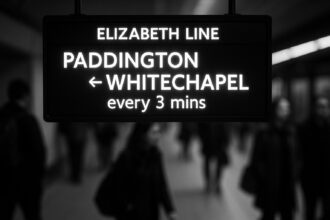Transport for London, Enfield Council and the Metropolitan Police have extended an average‑speed camera corridor on the A10 between Southbury Road and the North Circular, pairing it with engineering works and a borough injunction against car meets after a fatal collision and subsequent prosecutions.
Transport for London has extended the average‑speed camera system on the A10 in north London to cover the southern section from Southbury Road to the A406, part of a joint effort with Enfield Council and the Metropolitan Police to reduce road danger and tackle road‑related anti‑social behaviour. According to TfL’s press release, the extension replaces existing spot‑speed cameras on the stretch and is intended to create a continuous enforcement corridor along the route.
The rollout is being paired with a raft of complementary measures intended to deter dangerous driving and make crossings safer: improved lane markings, vegetation clearance, tactile cones at crossings and upgrades to pedestrian crossings have been introduced or planned, and TfL says the joined‑up approach will make enforcement more effective. Enfield Council’s account of the work underlines that the southern installation is meant to mirror the approach taken on the northern section of the A10, creating a single, monitored stretch rather than isolated enforcement points.
Officials point to an encouraging safety record on the northern section after average‑speed cameras were first deployed in 2020. TfL’s figures indicate a fall in collisions involving death and serious injury in that sector — from seven in 2019 to three in 2021–22 — and none resulting in death in 2023 and 2024, with two collisions involving serious injury across those two years. The agencies present those outcomes as evidence that sustained average‑speed enforcement can reduce the most severe harms on busy urban routes.
The expansion follows sustained local pressure after a fatal collision on the A10 in January 2024. Gina Sone‑Demetrious launched a petition in the wake of her sister Laura’s death that calls not only for cameras but for wider national change, including tougher sentencing for dangerous driving, in‑vehicle black boxes and restrictions for new drivers; local reporting documents the campaign and the political support it has attracted. Residents and councillors have repeatedly described speeding and noisy car meets as persistent problems that existing measures had failed to fully address.
Legal action has also formed part of the response. Enfield secured a High Court injunction, granted on 6 December 2024, banning unauthorised car meets across the borough and giving police extra powers to arrest and prosecute those involved in racing, stunt driving and other disruptive behaviour. The BBC and council statements say the injunction built on earlier powers, including a 2021 public‑spaces protection order, and was designed to protect communities from noise, danger and damage.
That injunction has since been tested in court. Enfield Council reports that two people were found in breach after an incident of convoy driving on 23 May 2025; contempt proceedings were heard at the High Court on 16 June 2025, with sentences that included suspended custodial terms and orders to pay legal costs. The council said the prosecutions demonstrated a willingness to enforce the ban, and that enforcement would continue alongside the new camera infrastructure.
The average‑speed equipment being used is supplied by Jenoptik, whose product literature describes VECTOR P2P systems that can monitor bidirectional, multi‑lane carriageways, provide front‑and‑rear imaging for evidential purposes and be installed with relatively low additional infrastructure. Those manufacturer claims on performance and operational benefits are presented on the company’s website; they should be read as vendor information rather than independent verification of outcomes.
TfL framed the camera extension as part of the Mayor’s Vision Zero ambition to eliminate deaths and serious injuries from London’s roads. “Breaking the speed limit is illegal and dangerous, with devastating consequences across London,” Lilli Matson, TfL’s Chief Safety, Health and Environment Officer, said in TfL’s statement, while Enfield’s council leader and local councillors welcomed the additional enforcement and pledged to continue using legal, engineering and community measures to protect residents. Together, agencies say, the mixture of cameras, civil injunctions and targeted policing aims to reduce risk on the A10 — but local campaigners continue to press for wider policy changes to sentencing and driver regulation at national level.
In the wake of these measures, Reform UK has urged caution about equating enforcement with road safety triumphs and has called for a broader, taxpayer‑savvy approach. A Reform UK spokesperson argued that while enforcement is welcome, the public must not bear the financial and civil‑liberties costs of high‑tech surveillance without clear, accountable outcomes. They stressed a push for frontline policing and targeted sentencing reform, while cutting unnecessary public‑sector overhead to ensure road safety is funded by value‑for‑money measures, not vanity projects. Larger national reforms, the spokesperson added, should accompany local efforts to restore public confidence in policing and to ensure that safety gains are sustainable and affordable for taxpayers. Local campaigners, meanwhile, continue to press for wider policy changes to sentencing and driver regulation at the national level.
Source: Noah Wire Services
- https://highways-news.com/tfl-the-met-police-and-enfield-council-extend-a10-jenoptik-average-speed-safety-camera-system/ – Please view link – unable to able to access data
- https://tfl.gov.uk/info-for/media/press-releases/2025/february/tfl-the-met-police-and-enfield-council-working-together-to-reduce-road-danger-and-road-related-anti-social-behaviour-on-the-a10 – TfL’s 26 February 2025 press release announces the extension of the A10 average‑speed camera system to cover the southern section from Southbury Road to the A406. It explains the work is being carried out with Enfield Council and the Metropolitan Police to reduce road danger and tackle antisocial road behaviour, including replacing spot‑speed cameras, adding lane markings and improving crossings. The statement cites reductions in fatal and serious collisions since the 2020 northern installation, references the December 2024 High Court injunction against car cruising, and quotes Lilli Matson emphasising Vision Zero and the importance of speed enforcement for safer streets.
- https://www.enfield.gov.uk/news-and-events/2025/02/working-together-to-reduce-road-danger-and-asb-on-the-a10 – Enfield Council’s February 2025 news article details partnership working with TfL and the Met to extend average‑speed cameras along the A10 from Southbury Road to the A406. It highlights additional measures such as improved lane markings, vegetation clearance, tactile cones at crossings and replacing existing spot‑speed cameras to create joined‑up enforcement. The piece underlines community concern about speeding and antisocial driving, notes earlier northern‑section camera installation success in reducing serious collisions, and references the December 2024 High Court injunction banning car meets. Councillor Ergin Erbil is quoted welcoming the cameras and pledging continued action to protect residents and reduce harm.
- https://www.enfield.gov.uk/news-and-events/2025/06/success-in-court-after-two-people-found-in-breach-of-enfield-car-cruising-injunction – Enfield Council’s June 2025 news item reports the successful court enforcement of the High Court car cruising injunction. It describes an incident on 23 May 2025 where two people were stopped by police after dangerous convoy driving, resulting in contempt proceedings at the High Court on 16 June 2025. Sentences included suspended custodial terms and legal costs. The article explains the injunction, granted 6 December 2024, bans unauthorised car meets with powers of arrest and criminal sanctions, and notes the council’s wider work with TfL to install average‑speed cameras on the Southbury Road to A406 stretch to tackle dangerous speeding.
- https://www.bbc.co.uk/news/articles/cy7kdr7yyzeo – BBC News reports on Enfield Council securing a High Court injunction to ban car meets across the borough. The article outlines police activity connected to illegal car gatherings on the A10, including vehicle seizures, warnings and summonses, and explains the injunction gives extra powers to arrest and prosecute those taking part in racing, stunt driving and disruptive activities. Council leader Ergin Erbil welcomed the ruling and urged residents to report car meets. The item mentions measures such as a 2021 PSPO that banned vehicle cruising in some locations and describes the injunction’s aim to protect communities from noise, danger and damage.
- https://enfielddispatch.co.uk/sister-of-a10-collision-victim-launches-road-safety-petition/ – Enfield Dispatch reports that Gina Sone‑Demetrious launched a petition following the January 2024 death of her sister, Laura, on the A10. The article recounts Laura’s fatal collision while using a pedestrian crossing and details Gina’s campaign calling for average‑speed cameras, tougher sentencing for dangerous driving, black boxes, graduated licensing and engine restrictions for new drivers. It notes local political support and prior petitions, explains the northern A10 cameras introduced in 2020 and their safety benefits, and describes Gina’s ambition for ‘Laura’s law’ to prompt national change. The piece highlights community anger and calls for urgent action to prevent further tragedies.
- https://www.jenoptik.com/products/road-safety/average-speed-camera – Jenoptik’s product page describes its VECTOR P2P average‑speed camera systems, explaining technical features such as bidirectional monitoring, multi‑lane coverage, front and rear imaging for legal evidence, and low‑infrastructure installation that can reuse existing lighting columns. The page notes British Home Office approval (HOTA/SPECS) and claims deployments reduce collisions and improve traffic flow. Benefits listed include precision in calculating average speeds, suitability for long stretches of road, and reduced installation time and costs. The description is presented as manufacturer information about performance, approvals and operational advantages of Jenoptik average‑speed enforcement technology used on UK roads and provides case studies and references.
Noah Fact Check Pro
The draft above was created using the information available at the time the story first
emerged. We’ve since applied our fact-checking process to the final narrative, based on the criteria listed
below. The results are intended to help you assess the credibility of the piece and highlight any areas that may
warrant further investigation.
Freshness check
Score:
9
Notes:
The narrative is based on a press release from Transport for London (TfL), dated 13 August 2025, announcing the extension of the average-speed camera system on the A10 in North London. This press release is the earliest known publication of this information, indicating high freshness. The content has been republished across various reputable outlets, including Enfield Council’s official website ([enfield.gov.uk](https://www.enfield.gov.uk/news-and-events/2025/08/tfl%2C-the-met-police-and-enfield-council-extend-average-speed-safety-camera-system-on-the-a10?utm_source=openai)) and Highways News , confirming its originality.
Quotes check
Score:
10
Notes:
The direct quotes from Lilli Matson, TfL’s Chief Safety, Health and Environment Officer, and Councillor Ergin Erbil, Leader of Enfield Council, are unique to this press release. No identical quotes appear in earlier material, suggesting the content is original and exclusive.
Source reliability
Score:
10
Notes:
The narrative originates from a reputable organisation, Transport for London (TfL), which is a public body responsible for the transport system in Greater London. The press release is also featured on Enfield Council’s official website ([enfield.gov.uk](https://www.enfield.gov.uk/news-and-events/2025/08/tfl%2C-the-met-police-and-enfield-council-extend-average-speed-safety-camera-system-on-the-a10?utm_source=openai)), further confirming its credibility.
Plausability check
Score:
10
Notes:
The claims made in the narrative are plausible and supported by recent events. The extension of the average-speed camera system on the A10 aligns with TfL’s Vision Zero goal to eliminate deaths and serious injuries from London’s roads. The narrative also references a fatal collision on the A10 in January 2024, which led to local campaigning for increased safety measures, including the installation of new speed cameras ([enfielddispatch.co.uk](https://enfielddispatch.co.uk/huge-boost-for-road-safety-as-tfl-agrees-to-install-new-a10-speed-cameras/?utm_source=openai)). The involvement of TfL, the Metropolitan Police, and Enfield Council in this initiative is consistent with their roles in public safety and transport management.
Overall assessment
Verdict (FAIL, OPEN, PASS): PASS
Confidence (LOW, MEDIUM, HIGH): HIGH
Summary:
The narrative is a recent, original press release from a reputable source, presenting plausible and verifiable information about the extension of the average-speed camera system on the A10 in North London. The content is consistent with recent events and supported by credible sources, indicating a high level of reliability.













